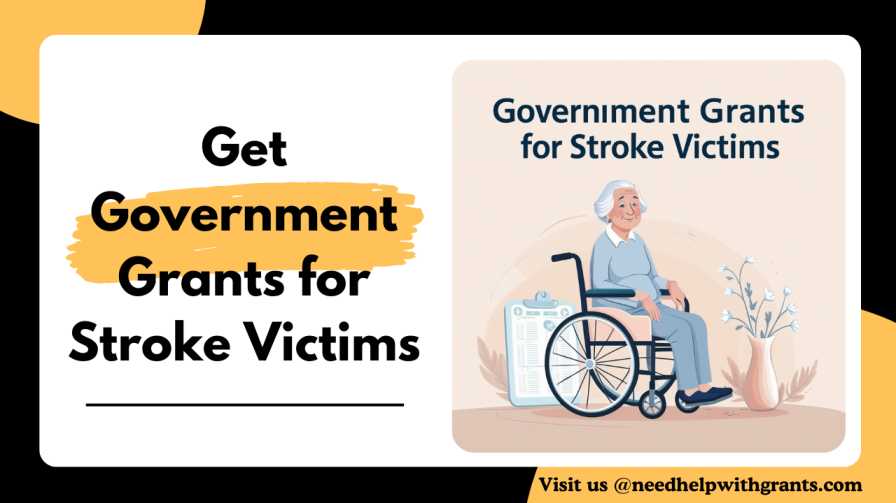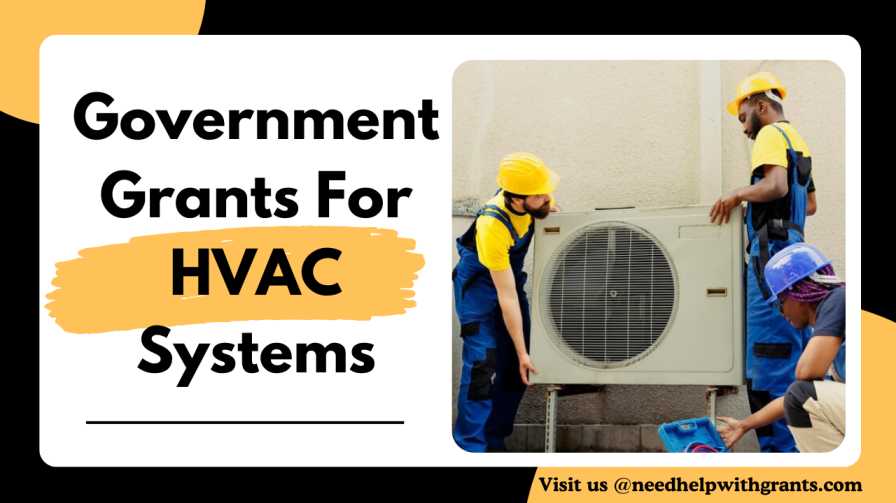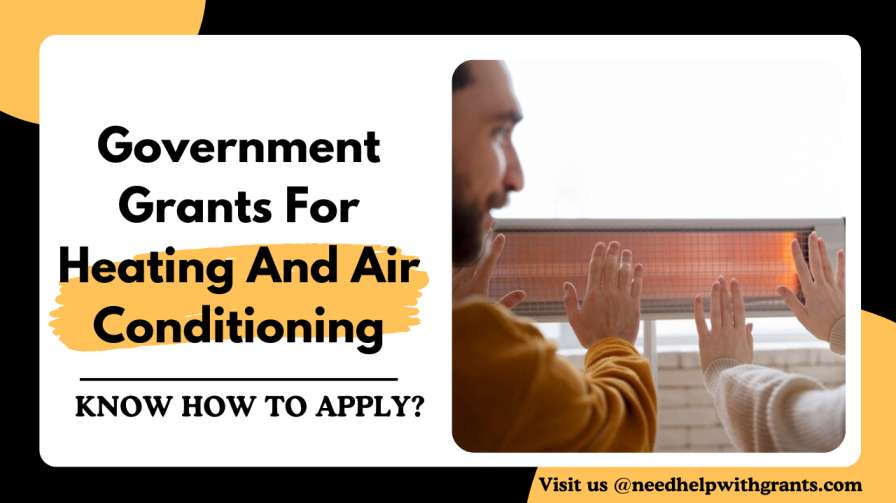Government Grants for Stroke Victims
Recovering from a stroke can be a difficult process, both physically and financially. For stroke survivors and their families, access to government grants can provide crucial support for medical care, rehabilitation, and daily expenses.
Stroke is a serious illness that can have long-lasting effects on a person’s health and quality of life. Fortunately, there are several government grants and programs available to help stroke victims and their families manage the financial burden of medical care and rehabilitation.
How To Find Government Grants for Stroke Victims?
Finding government grants for stroke victims can be a crucial step in managing the financial impact of medical care and rehabilitation. Here are some steps to help you navigate the process:
1. Research federal programs
Start by exploring federal programs such as Social Security Disability Insurance (SSDI) and Supplemental Security Income (SSI). These programs provide financial assistance to people who are unable to work due to a disability, including stroke. You can apply for these programs through the Social Security Administration website.
2. Check out state and local programs
Many states and local governments offer additional programs and grants to support stroke victims and their families. Contact your state health department or local social services agency to learn about available resources. They can provide you with information about financial assistance, transportation services, and access to community resources.
3. Contact nonprofits
Several nonprofit organizations provide grants and financial assistance to stroke victims. Organizations such as the American Stroke Association, the National Stroke Association, and the Heart and Stroke Foundation offer support for medical expenses, rehabilitation, and other needs. Visit their websites to learn about eligibility requirements and application processes.
4. Use online resources
Many online resources can help you find government grants and financial assistance for stroke victims. Websites such as Growing Family Benefits and the Stroke Foundation provide information about available programs and how to apply. These resources can guide you through the application process and help you gather the necessary documentation.
5. Seek help from healthcare providers
Your healthcare provider can be a valuable resource for finding financial assistance for stroke victims. They may know of local programs, grants, and nonprofit organizations that can provide support. Don’t hesitate to ask them for guidance and recommendations.
6. Apply for multiple programs
To increase your chances of receiving assistance, apply for multiple programs and grants. This can help cover multiple expenses and provide a more comprehensive support system. Be sure to follow the application instructions carefully and provide all required documentation.
Read Also: Government Grants For HVAC Systems
Grants and Assistance Programs Available for Stroke Victims
Several grants and programs may be available to stroke victims, including:
Stroke Survivors Fund
Available to stroke survivors who are at least 21 years old, reside in the United States, and demonstrate financial need. Applicants must also demonstrate that they need to continue physical therapy, occupational therapy, or speech therapy and that their health insurance benefits have been exhausted.
Paul Coverdell National Acute
Supports state stroke systems by improving care for stroke patients and those at increased risk for stroke. Recipients must focus on community-based prevention activities and post-discharge follow-up.
Stroke Victor Recovery Fund
Stroke Victor Recovery Fund provides partial scholarships to stroke survivors who need additional therapy but cannot afford it or whose insurance reimbursements have ended.
Social Security Disability Benefits
Stroke victims may qualify for disability benefits if they have vision loss or other physical impairments as a result of their stroke.
Help Hope Live
Offers personalized fundraising assistance, including customized materials and guidance on how to mobilize the community.
Long-Term Disability (LTD) Benefits
Employees who have suffered a serious stroke may be eligible to receive LTD benefits through their employer. LTD benefits are typically based on a percentage of the employee’s earnings, usually between 50% and 80%.
Government Grants for Stroke Victims
Here is the list of government grants for stroke victims
Social Security Disability Insurance (SSDI)
SSDI provides financial assistance to people who are unable to work due to a disability, including a stroke. To qualify, you must have worked in jobs covered by Social Security and have a sufficient number of work credits. The application process can be lengthy, so it’s important to apply as soon as possible.
Supplemental Security Income (SSI)
SSI is a needs-based program that provides financial assistance to elderly, blind, or disabled people with limited income and resources. Stroke victims who meet the eligibility criteria may receive monthly payments to help cover living expenses.
Medicaid
Medicaid is a joint federal and state program that provides health coverage to low-income people, including those with disabilities. Many stroke victims qualify for Medicaid, which can help cover the cost of medical care, rehabilitation, and long-term care services.
Medicare
Medicare is a federal health insurance program for people age 65 and older, as well as certain younger people with disabilities. Stroke victims who qualify for SSDI or have received Social Security disability benefits for 24 months are eligible for Medicare. Medicare can help cover hospital stays, doctor visits, and rehabilitation services.
Veterans Benefits
If you are a veteran who has suffered a stroke, you may be eligible to receive benefits through the Department of Veterans Affairs (VA). The VA offers a variety of services, including medical care, rehabilitation, and financial assistance to veterans with disabilities.
Vocational Rehabilitation Services
Stroke survivors looking to reenter the workforce may qualify for vocational rehabilitation services, including job training, counseling, and placement.
Read More: How to Get a Free Car from Government?
Best Places to Find Free Government Assistance for Stroke Victims
Here are the best places to find free government assistance for stroke victims:
Local Health Departments and Social Services
Local agencies often provide information about community resources, support groups, and additional assistance programs designed for stroke survivors.
Department of Veterans Affairs (VA) Benefits
If the stroke survivor is a veteran, the VA offers several benefits, including health care services, disability compensation, and vocational rehabilitation.
State and Local Programs
Many states and local governments offer additional programs and grants to support stroke victims and their families. These programs may include financial assistance, transportation services, and access to community resources. It is important to check with your state health department or local social services agency for more information.
Nonprofit Organizations
Some nonprofit organizations provide grants and financial assistance to stroke victims. These organizations may offer support for medical expenses, rehabilitation, and other needs. Some well-known organizations include the American Stroke Association, the National Stroke Association, and the Heart and Stroke Foundation.
Housing Assistance for Stroke Victims
Here I have given housing assistance for stroke victims:
Section 8 Housing Choice Voucher Program
A federal program that provides rental assistance to low-income individuals, including those with disabilities. Vouchers can be used to rent private housing. Based on income and disability status. Stroke survivors may qualify if they meet income limits. Applications are administered by local Public Housing Agencies (PHAs). Contact your local PHA for details.
Public Housing
Affordable housing is owned and operated by local housing authorities. Open to low-income individuals, including those with disabilities. Visit your local housing authority for application details.
Home and Community-Based Services (HCBS) Waivers
Medicaid HCBS waivers may fund home modifications to make living spaces more accessible for stroke survivors (e.g., wheelchair ramps, grab bars, wider doorways). Contact your state Medicaid office for details.
VA Housing Grants
Stroke survivors who are veterans may qualify for Specially Adapted Housing (SAH) grants. This helps build or modify a home to meet accessibility needs. Visit the U.S. Department of Veterans Affairs website for application details.
Disability Living Allowance After Stroke
Disability Benefit for Daily Living (DLA) is a benefit for children and adults who need help with personal care or mobility due to a disability. If you have suffered a stroke and it has caused significant difficulties with daily activities, you may be eligible for DLA.
How to Apply for DLA?
Contact the Social Security Administration (SSA) – You can begin the application process by contacting the SSA. They will guide you through the necessary steps and provide you with the necessary forms.
Gather medical documentation – You will need to provide medical evidence of your condition, including details about how the stroke has affected your ability to perform daily activities.
Complete the application – Complete the DLA application form, providing detailed information about your condition and how it affects your daily life.
Apply – Submit the completed application along with the required medical documentation to the SSA.
Application Process for Survivor Funds and Assistance
The application process for survivor funds and assistance are described!
1. Check Eligibility
Look at the eligibility requirements at the top of this page and make sure you meet all of them. You can apply yourself or ask a family member, caregiver, or medical professional to apply on your behalf.
2. Gather Documents
We need you to submit documentation to confirm your diagnosis and demonstrate financial need, and insurance coverage. Make sure you have these on hand before you fill out the form.
3. Complete the Application
Scroll down this page and complete the form, making sure all required fields are answered, requested files are uploaded and sign the application.
4. Wait for a Response
We will review all incoming applications and make sure all eligibility and application requirements are met. Since we have an all-volunteer team, it may take us a while to review everything and get back to you. We appreciate your patience and understanding.
Read Also: Free Government Grants For Dental Implants
Conclusion
Overcoming the financial challenges of a stroke can be overwhelming, but there are many resources available to help. By exploring government grants, Medicaid, Medicare, and other programs, stroke victims and their families can find the support they need to manage the costs of health care and rehabilitation. Don’t hesitate to reach out to local agencies, nonprofits, and health care providers for help. additional resources.
Frequently Asked Questions (FAQs)
What support is available for stroke victims?
There are government grants and assistance programs available for stroke victims and survivors. Above, we compiled a list of grants and programs that support stroke victims.
What does Medicaid cover for stroke patients?
Some working-age stroke survivors will be eligible for both Medicaid and Medicare due to their disability and low income/assets. If you are eligible for SSI, you are also eligible for Medicaid, which helps you pay doctor and hospital bills.
What are you entitled to if you have had a stroke?
Financial help may be available through the benefits system. You may also be able to get help through your employer, local council and other organizations. You can also call our helpline, which can tell you where you can find further help.
How long will insurance pay for stroke rehab?
Medicare will typically cover up to 90 days of inpatient rehabilitation for a stroke:
Days 1–60: You usually pay nothing after meeting your Part A deductible.
Days 61–90: You pay a per-day charge set by Medicare.
Days 91–150: You can use up to 60 lifetime reserve days at a per-day charge set by Medicare.
Day 150 and beyond: You pay 100 percent of the cost



